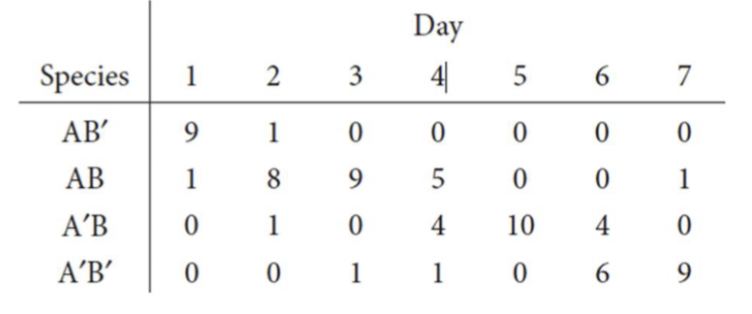Lecture #11 | Estimating PMI using Insect Succession Data
1/6
There's no tags or description
Looks like no tags are added yet.
Name | Mastery | Learn | Test | Matching | Spaced |
|---|
No study sessions yet.
7 Terms
Successional Interval
Indicates the days following death that each species is found on the corpse
Change in abundance of each taxon is shown by slope of the line

Occurence matrix
Presence/absence of a species over time
a probability model with 1= present and 0=absent
Explain the occurrence matrix

Graph that explains the presence of necrophageous species A and B on 10 pig carcasses
The use of ‘ indicates absence: A’B: just B
Based on the occurrence matrix, what is the PMI estimated to be if both A and B are present?

Days 2-3
explanation: If the specific species A and B are present on the body (A is determined to be an early colonizer), the body is probably fresh. So if 80-90% of cases have A and B, it is likely the body is fresh, so PMI is around day 2-3
Why is it not 100%: Insects are not 100% reliable, so 10-20% of cases are outside the norm
Based on the occurrence matrix, how many days since death is most likely if only species B is present?

Absent A, present B: A’B
Likely 5 days after death
Explanation: Days 4-6, mainly 5, represent the largest presence of just B, without A.
100% of carrion had just B on day 5
10% had just B on day 2
What constraints exist to using successional interval to estimate PMI?
Predictability of succession
Not 100%, there will always be outliers
Reference data for comparison
References are old cases but can be limited by locality in both geography and seasonality
How can forensic statistics be improved for better accuracy?
Combine multiple matrices for several species
Use both immature and adult presence